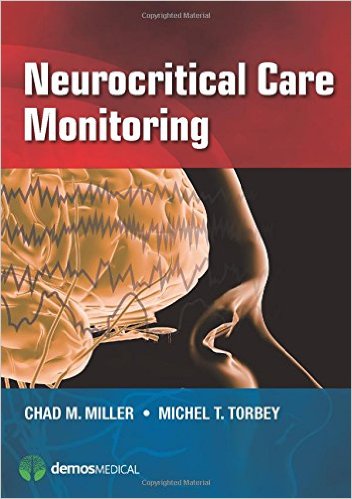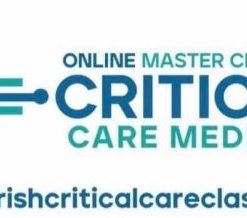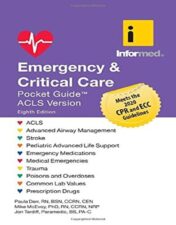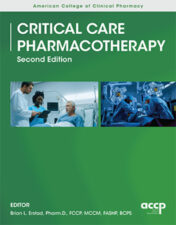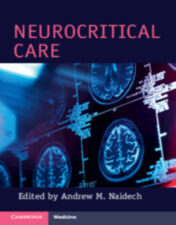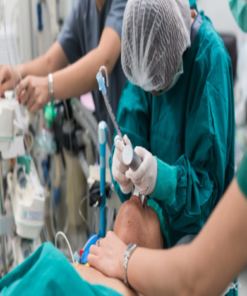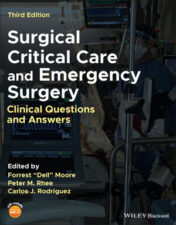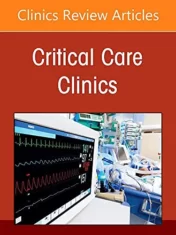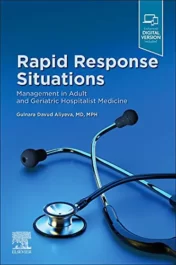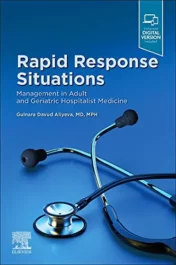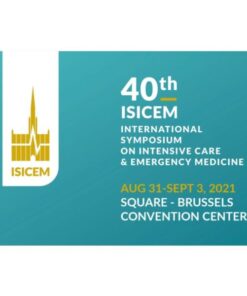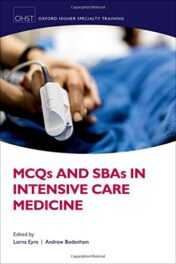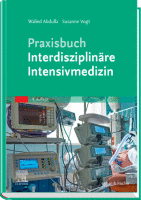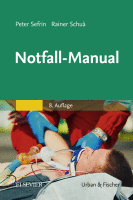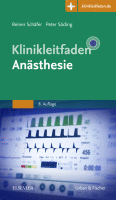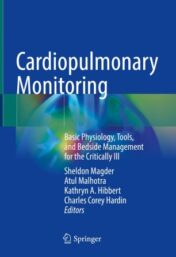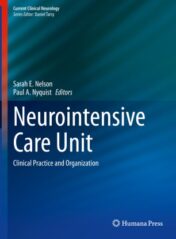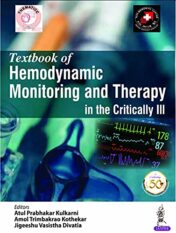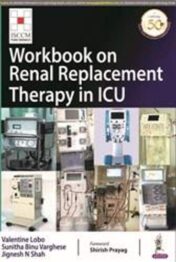- Paperback: 184 pages
- Publisher: Demos Medical; 1 edition (October 10, 2014)
- Language: English
- Type : PDF ORIGINAL
- ==========================+======================
-
Note : We will send ebook download link after confirmation of payment via paypal success
Payment methods: Visa or master card (Paypal)
- Presents state-of-the-art neuromonitoring techniques and clinical protocols for assessment and treatment
- Emphasizes practical implementation for successful patient outcomes
- Written by international experts at the forefront of neurocritical care monitoring
- Provides a framework for practitioners who wish to individualize patient care with an emphasis upon the needs of the critically ill brain
- Discusses the key role of nurses in neuromonitoring and effective bedside training for management and troubleshooting of devices
Neurocritical Care Monitoring 1st Edition
I commend the editors for their careful perspective on the current state of neuromonitoring. The individual chapters provide excellent overviews of specific neuromonitoring tools and paradigms
From the Foreword by J. Claude Hemphill III, MD, MAS, FNCS
While damage resulting from a primary injury to the brain or spine may be unavoidable, harm from secondary processes that cause further deterioration is not. This practical, clinical resource describes the latest strategies for monitoring the brain after acute injury. With a focus on individualization of treatment, the book examines the role of various monitoring techniques in limiting disability and potentiating patient recovery during the acute phase of brain injury. International experts in diagnosis and treatment of secondary injury explain in detail the current utilization, benefits, nuances, and risks for each commercially available monitoring device as well as approaches vital to the care of brain and spine injured patients. They cover foundational strategies for neuromonitoring implementation and analysis, including proper catheter placement, duration of monitoring, and treatment thresholds that indicate the need for clinical intervention. The book also addresses multimodality monitoring and common programmatic challenges, and offers guidance on how to set up a successful multimodal monitoring protocol in the ICU. Also included is a chapter on the key role of nurses in neuromonitoring and effective bedside training for troubleshooting and proper execution of treatment protocols. Numerous illustrations provide further illumination.
Key Features:
Product Details |
Related Products
INTENSIVE CARE BOOKS
INTENSIVE CARE BOOKS
L’infirmier(e) en service de réanimation (Original PDF from Publisher)
INTENSIVE CARE BOOKS
INTENSIVE CARE BOOKS
Online Masterclasses Critical Care Medicine (Updated January 2023) (Videos)
INTENSIVE CARE BOOKS
American Journal of Critical Care 2022 Full Archives (True PDF)
INTENSIVE CARE BOOKS
INTENSIVE CARE BOOKS
INTENSIVE CARE BOOKS
INTENSIVE CARE BOOKS
Practical Trends in Anesthesia and Intensive Care 2020-2021, 1st edition (EPUB)
INTENSIVE CARE BOOKS
Clinical Cases in Critical Care, 1st edition (Original PDF from Publisher)
INTENSIVE CARE BOOKS
SCCM 2022 Critical Care Congress On Demand (CME VIDEOS) (Updated Complete Videos)
INTENSIVE CARE BOOKS
Critical Care Update 2022, 4th Edition (Original PDF from Publisher)
INTENSIVE CARE BOOKS
Repetitorium Transplantationsbeauftragte (German Edition) (EPUB)
INTENSIVE CARE BOOKS
The Ventilator Book, 3rd Edition (AZW3 + EPUB + Converted PDF)
INTENSIVE CARE BOOKS
Chestnet Critical Care Board Review On Demand 2022 (CME VIDEOS)
INTENSIVE CARE BOOKS
Emergency & Critical Care Pocket Guide, Revised Eighth Edition 2021 Original PDF
INTENSIVE CARE BOOKS
Fundamental Critical Care Support: Resource Limited 2020 AZW3 + EPUB + Converted PDF
INTENSIVE CARE BOOKS
Cases in Pre-Hospital and Retrieval Medicine, 2nd edition 2022 Original PDF
INTENSIVE CARE BOOKS
Critical Care Pharmacotherapy, Second Edition 2022 EPUB + Converted PDF
INTENSIVE CARE BOOKS
Critical Care Transport with Navigate Advantage Access 3rd Edition 2022 Original pdf
INTENSIVE CARE BOOKS
Neurocritical Care (Cambridge Manuals in Neurology) 2022 Original PDF
INTENSIVE CARE BOOKS
Evidence-Based Critical Care: A Case Study Approach, 2nd Edition 2020 Original PDF
INTENSIVE CARE BOOKS
Command the Airway with Rich Levitan An emergency airway masterclass CME VIDEOS
INTENSIVE CARE BOOKS
INTENSIVE CARE BOOKS
Critical Care and Hospitalist Medicine Made Ridiculously Simple 2019 High Quality PDF
INTENSIVE CARE BOOKS
Critical Care: Board and Certification Review, 2022 Edition 2021 AZW3 + EPUB + Converted PDF
INTENSIVE CARE BOOKS
Advances in Pacu Post Anesthesia Care Unit 2022 Original PDF
INTENSIVE CARE BOOKS
Tracheostomy: Indications, Safety and Outcomes 2021 Original PDF
INTENSIVE CARE BOOKS
INTENSIVE CARE BOOKS
INTENSIVE CARE BOOKS
Current opinion in critical care 2021 full archives true pdf
INTENSIVE CARE BOOKS
INTENSIVE CARE BOOKS
INTENSIVE CARE BOOKS
40th ISICEM International Symposium on Intensive Care & Emergency Medicine 2021 (CME VIDEOS
INTENSIVE CARE BOOKS
Essentials of Aerosol Therapy in Critically ill Patients 2021 Original pdf
INTENSIVE CARE BOOKS
MCQs and SBAs in Intensive Care Medicine (Oxford Higher Special Training) 2021 Original pdf
INTENSIVE CARE BOOKS
Oxygen: Creating a New Paradigm First Ed 2021 epub+converted pdf
INTENSIVE CARE BOOKS
Praxisbuch Interdisziplinäre Intensivmedizin 2021 Original pdf
INTENSIVE CARE BOOKS
INTENSIVE CARE BOOKS
Notarzt-Leitfaden Mit Zugang zur Medizinwelt A volume in Klinikleitfaden 2017 Original pdf
INTENSIVE CARE BOOKS
INTENSIVE CARE BOOKS
INTENSIVE CARE BOOKS
INTENSIVE CARE BOOKS
Internistische Therapie Theoretische Modelle und Klinische Praxis 2016 Original pdf
INTENSIVE CARE BOOKS
Handbuch Extrakorporale Organunterstützung 2019 Original pdf
INTENSIVE CARE BOOKS
INTENSIVE CARE BOOKS
Fachpflege Neonatologische und Pädiatrische Intensivpflege 2018 Original pdf
INTENSIVE CARE BOOKS
Palliative Care in Cardiac Intensive Care Units 2021 original pdf
INTENSIVE CARE BOOKS
Advanced Hemodynamic Monitoring: Basics and New Horizons 2021 Original pdf+VIDEOS
INTENSIVE CARE BOOKS
Opioid Use in Critical Care A Practical Guide 2021 Original pdf
INTENSIVE CARE BOOKS
INTENSIVE CARE BOOKS
INTENSIVE CARE BOOKS
Asthma Education Principles and Practice for the Asthma Educator 2021 Original pdf
INTENSIVE CARE BOOKS
Identification of Biomarkers, New Treatments, and Vaccines for COVID-19 2021 Original pdf
INTENSIVE CARE BOOKS
Scoring and Grading Systems in Anaesthesia and Intensive Care (PDF) 2019
INTENSIVE CARE BOOKS
INTENSIVE CARE BOOKS
Emergent Vascular Access A Guide for Healthcare Professionals Original pdf+videos
INTENSIVE CARE BOOKS
Annual Update in Intensive Care and Emergency Medicine 2021 Original pdf
INTENSIVE CARE BOOKS
INTENSIVE CARE BOOKS
Neurointensive Care Unit Clinical Practice and Organization 2020 ORIGINAL PDF
INTENSIVE CARE BOOKS
INTENSIVE CARE BOOKS
Practical Trends in Anesthesia and Intensive Care 2019 2020 ORIGINAL PDF
INTENSIVE CARE BOOKS
Critical Care Medicine Review: 1000 Questions and Answers (EPUB + Converted PDF) 2019
INTENSIVE CARE BOOKS
Challenging Concepts in Critical Care: Cases with Expert Commentary (Original PDF) 2020
INTENSIVE CARE BOOKS
INTENSIVE CARE BOOKS
INTENSIVE CARE BOOKS
The Washington Manual of Bedside Procedures Original PDF 2016
INTENSIVE CARE BOOKS
Textbook of Hemodynamic Monitoring and Therapy in the Critically Ill Original PDF 2019
INTENSIVE CARE BOOKS
Workbook on Renal Replacement Therapy in ICU (ISCCM) Original PDF 2019
INTENSIVE CARE BOOKS
The Washington Manual of Critical Care, 3rd Edition Original PDF 2017

